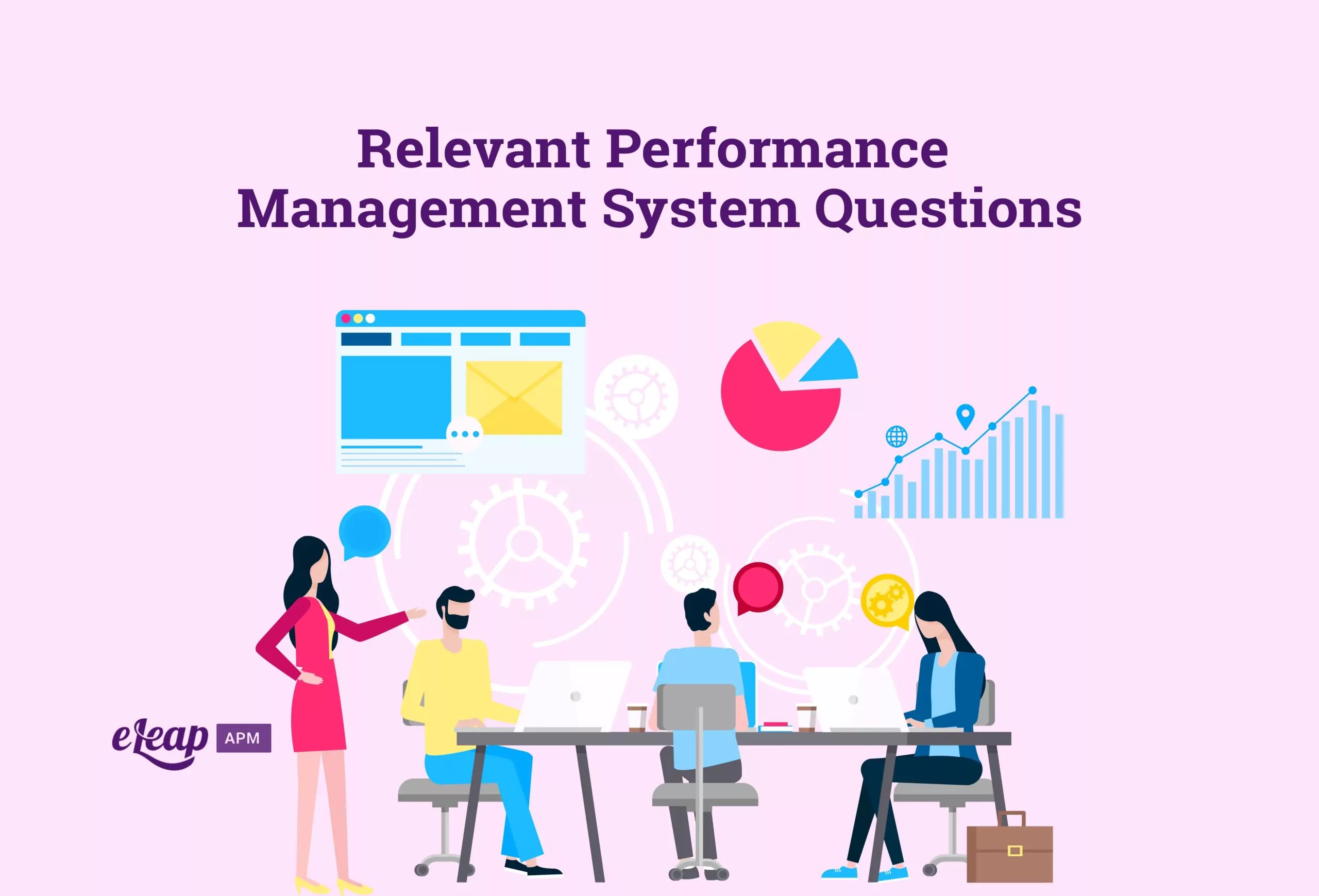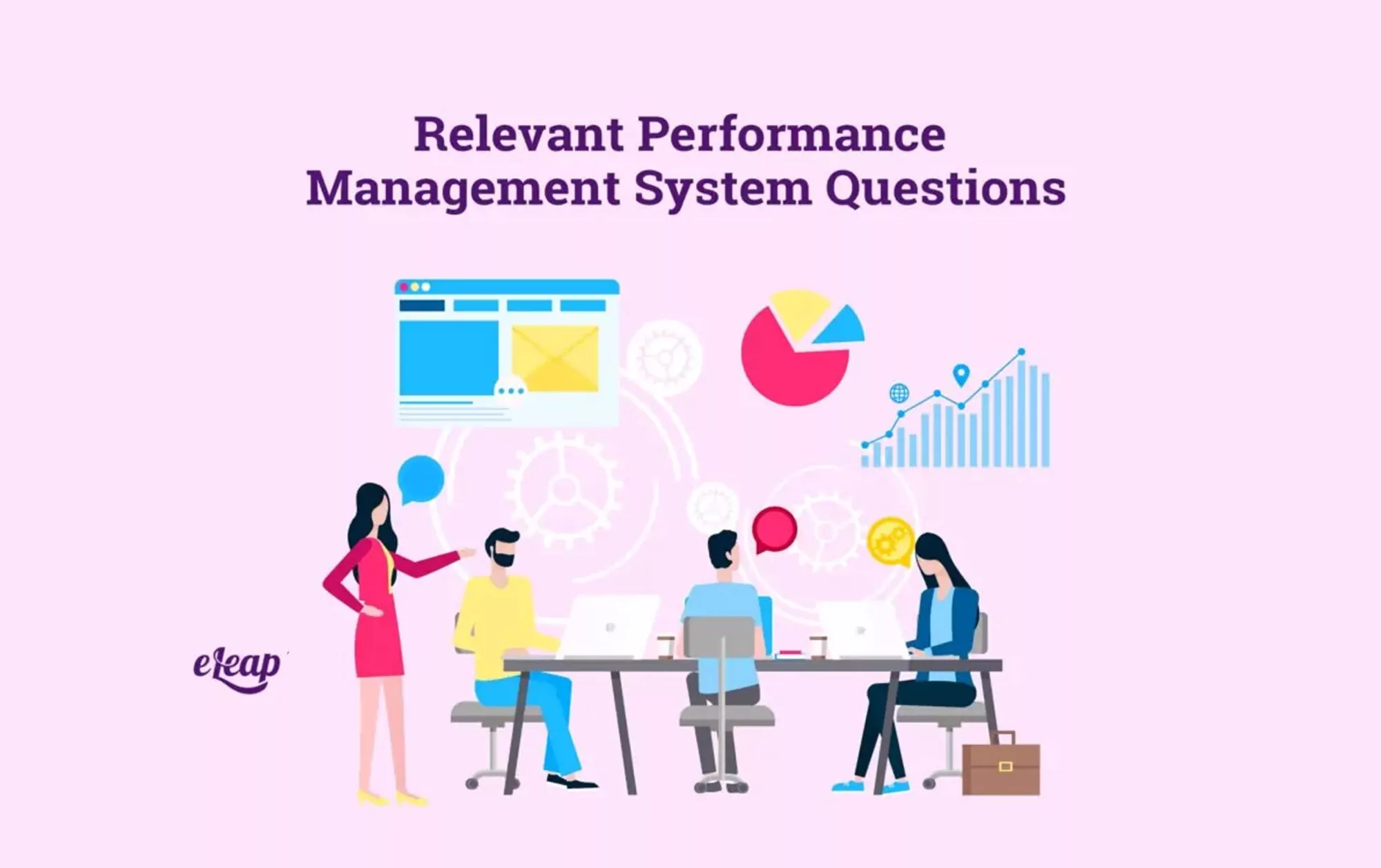Relevant Performance Management System Questions

When it comes to any PMS, there should be a clear mission statement and desired outcome from implementing a specific system. If you use any system blindly with no driving factors behind the selection, it almost defeats the purpose of using a PMS, to begin with.
If you’re thinking about choosing a new assessment system or evaluating your current, you should follow this article. Knowing the right questions to ask is the most critical part of analyzing the efficiency of your PMS or potential PMS.
Asking these questions is also important during times of frustration. It’s possible morale with workers is low, or the organization has hit a dip, and you need a reminder of why the PMS is so important.
During uncertain times, an efficient PMS will remind your workers of the importance of their goals and direction and assist managers with retaining workers and reconnecting. Continue reading for the most important performance management system questions.

1. What’s the Importance of Having a PMS?
At the core of an organization, a worker’s performance is one of the most crucial elements of business success. Worker feedback, performance reviews, positive reinforcement, and worker recognition are all driving factors of a successful organization.
However, dealing with all of these elements can be pretty overwhelming. This is where a PMS comes into play.
A quality PMS helps managers organize and define key roles within the organization. A sound performance assessment system also influences a manager’s decision-making.
2. What’s Working with Our System and What is Failing?
Sometimes, as a manager, you have to analyze what’s working and what’s not, whether it’s during times of success or times of hardship. Use the elements that seem to be working and build on them. Duplicate those elements and carry them over to the new system.
Eliminate the elements that aren’t benefiting the organization. Remember to keep this critical point in mind; don’t wait until you fail to analyze what works and what doesn’t.
When things reach the moment of failure, it could be too late. Times of success are better suited to analyze and make changes because you won’t be caught off guard.
3. If We Change Our System, Can We Guarantee Worker Adoption?
If the PMS in place has been in use for a long time, two things can happen. The first thing is the system can become obsolete. This is a common occurrence.
The second thing that could occur is your workers becoming complacent and too used to the current system. Please don’t allow your employees to lose their willingness to adopt change.
You can never guarantee anything in a business/worker situation. However, you can prepare your workers and get them used to the possible changes.
Speak with them, and don’t make them feel like you’re leaving them in the dark. Explain to them a new assessment system is being implemented, but it’s not a means for punishment.
A quality PMS benefits every vital component of an organization, and workers should understand that. What’s good for the organization is good for the workers and vice-versa.
6. How Easy Is Setting Up a New PMS?
The easier it is to set up a new PMS, the easier everyone will adopt it. Try to find an easy-to-use system that has easily accessible customer support with plenty of live agents at all times.
Make sure the company providing the PMS has an efficient onboarding process. Ask them if they provide troubleshooting services and offer live support.
7. What Level of Support Is Provided?
When you decide to implement a new PMS, the new provider must have your best interests and success in mind. Sometimes providers are only involved in the initial phases of the software production.
After the sale is made, everything is left in your hands to figure out or troubleshoot. Dealing with a provider who operates this way is not the ideal situation.
It’s essential to find a provider that will remain reliable during the entire length of the business relationship. Try and find a vendor that provides a plan of action for implementing the new system. Ask the provider if they assist with the transition process.
Make a list of potential providers and compare and contrast your options. Don’t limit yourself to just one potential vendor. Having a list can help in finding the provider with the services to accommodate your organization. These are the things you should look for when conducting provider research.
- Look up reviews on the vendor/provider. It’s important to deal with companies with good reviews exclusively
- Examine their support team ratings and find out how long their response times are. If you have an issue, you don’t want to be put on the back burner for days while you wait for a reply
- Support availability is essential. Are they available via phone, text, chat, or all three?
- Find NPS scores from past customers. If possible, make direct contact with past clients and find out how their experience went
- Research webinars and help libraries. If they have extensive resources in their help section or webinars to view, this is a good sign
Remembering to ask all these questions regarding your current provider and PMS can assist in deciding whether it’s time for a change. If you’ve already been contemplating a change, the last few questions can help you select the right provider.
With some careful planning and simple analysis, you can eliminate obsolete assessment systems and usher in a new era of efficiency for your organization. Sometimes, it’s just time to embrace the future and scrap your old system to make way for a modern, AI-based platform.